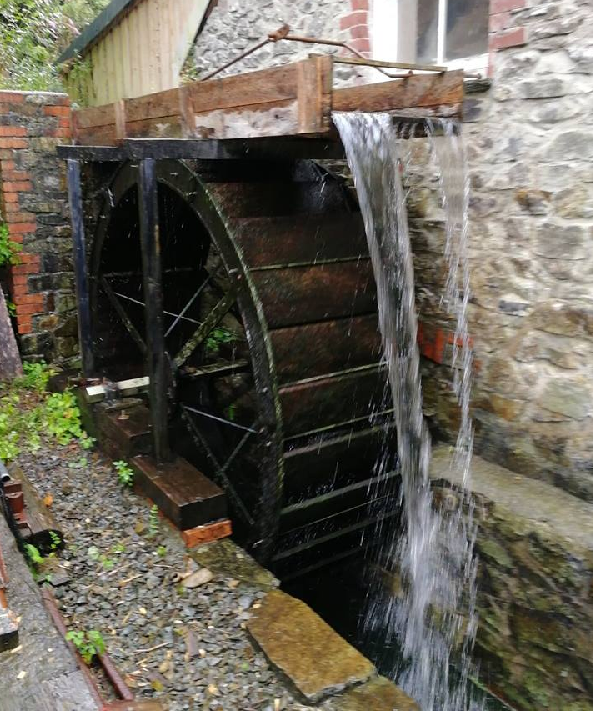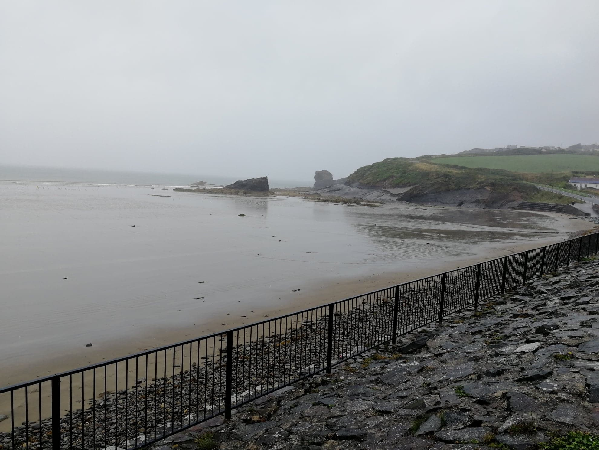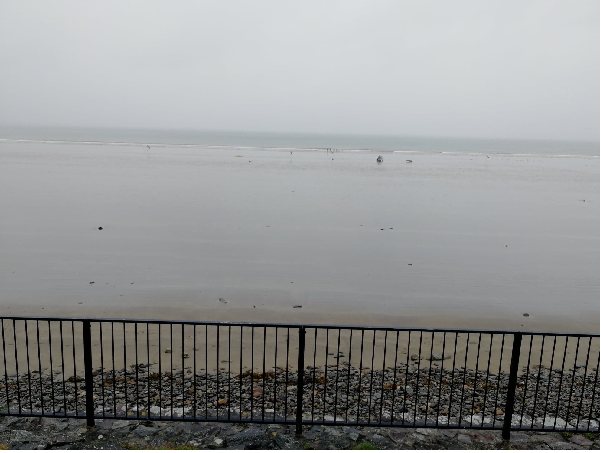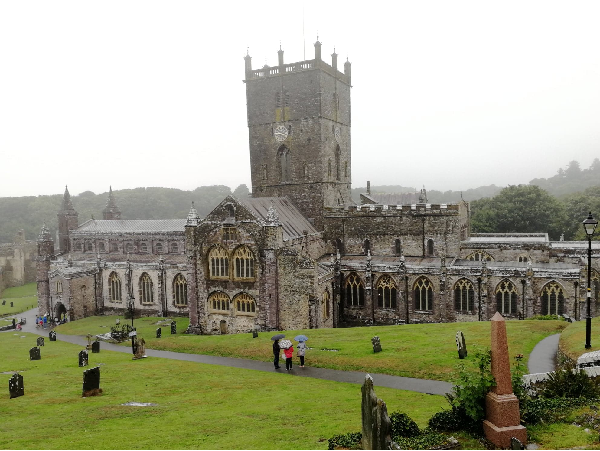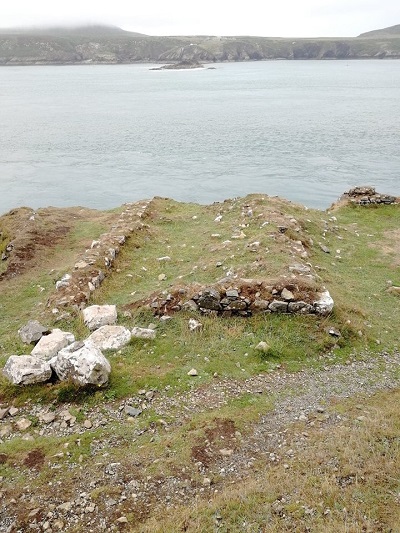
Woke early: this was the big day. I had finally arrived and there was only a walk to the most westerly place on the Welsh mainland left. I looked out of the window – it was raining, annoying, but nothing could stop me now. Took my porridge pot to the kitchen, mixed it with the remains of last night’s rice and headed off.
I had discovered the previous night that there was a coastal bus service for tourists that served the beaches and coves of St David’s headland. This headland had the Pembroke Coast Path running along it and is famously rocky with spectacular views. It goes through Whitesands Bay near the hostel and from where the children had come back the previous evening happy, and covered with sand. I headed for Whitesands Bay, taking the path behind the hostel and almost into the cloud and down to the beach. It was just the place for youngsters with a wide beach of fine sand and a snack bar/shop with everything needed for a day on the beach. Today it was very popular for surfers as the waves rolling into the wide and shallowing bay gave perfect conditions.
I picked up the bus, it was about a 20-seater with a very cheerful driver who clearly enjoyed his job, chatting to passengers, giving them useful information and helping them in and out. The bus went round to a cove, St Justinian, where it dropped me. I set off past a small Lifeboat House up on to the Coast Path running along the edge of the cliff. It was rocky, you could rarely take a full stride, and exposed where it ran past a series of spectacular niches where the sea was working into the cliffs.
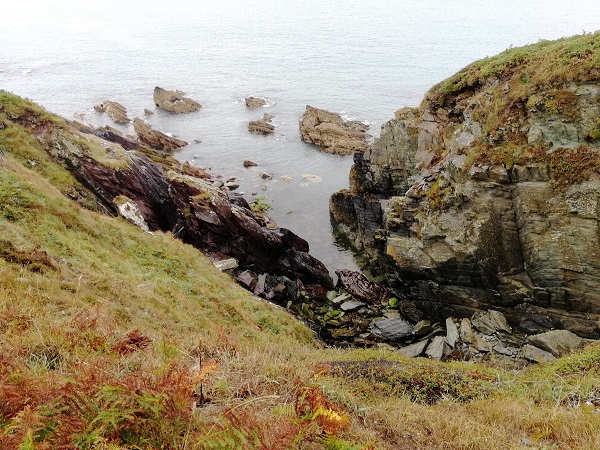
Wales’s “Land’s End” is not obvious from the map but can be worked out with careful calculation and I wondered if there would be something marking it. From the distance nothing is clearly visible but descending on to a small flat area where the point was, there were the foundations of a small building where you could look west over two small rocky islands called “The Bitches” to Ramsey Island. While I was carefully inspecting it two walkers came round the headland, enquired what I was doing, were impressed to find where they were and we exchanged photographs. Setting off again there was a clash of the high tides coming in opposite directions round Ramsey Island creating high tumbling waves which some adventurous kayakers were enjoying.
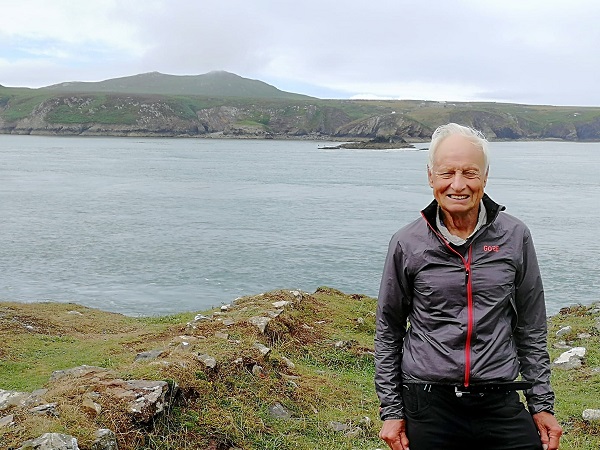
Ramsey Island is an RSPB reserve and this, with the neighbouring island of Skomer, have very large populations of seabirds, particularly Manx shearwater and Puffins. The Manx shearwater, a bird smaller than a gull, spends almost the whole of its life in the open ocean , returning to remote places on land to breed. Numbers were falling because of rats until there were only 850 pairs on Ramsey Island in 2000 and all the puffins had gone. Fortunately, they have now risen to 4,796 pairs according to the RSPB and the number of puffins has increased on Skomer but not returned to Ramsey Island. I then heard a guide tell a pair of Canadian clients that they had put cut-out models of puffins in good breeding places hoping to entice them back.
It was hard-walking to Porth Clas Cove with a glimpse of a seal and some harbour porpoises and expansive views out to The Celtic Sea but I was glad at last to be able to look down to the cove where I could pick up the bus which came shortly thereafter with the same driver. He said he had a 10 minute stop for coffee and took me around to a stall and recommended the home made flapjacks. The coffee was welcome and he was right about the flapjacks which had that crumbly consistency that you cannot get in a shop version. Joined by another family, the bus continued back to to St Davids in time for me to achieve my second ambition before evening services.
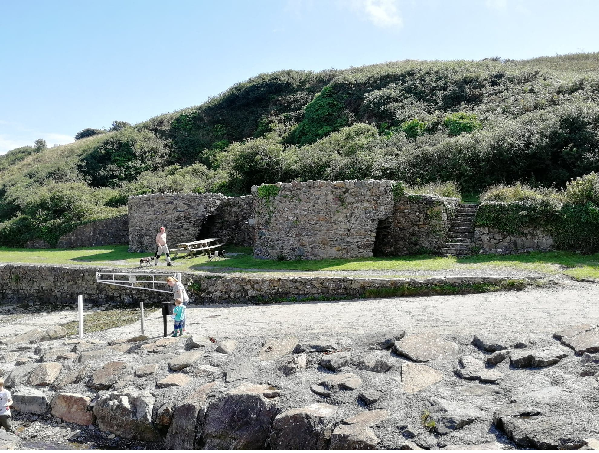
My National Service friend Ian’s obituary in 2009 had said that “his skill at the organ and inspiration of choirs showed throughout his ministry”. He used to talk with great passion about the organ and St. David’s was his last appointment before moving to a church in Leicester from where he retired. Was this appointment some reward for his work? It gave him access to the great organ there which he used to tell myself and my late wife about, with enormous enthusiasm, and I have had a growing ambition over the years to visit the Cathedral.
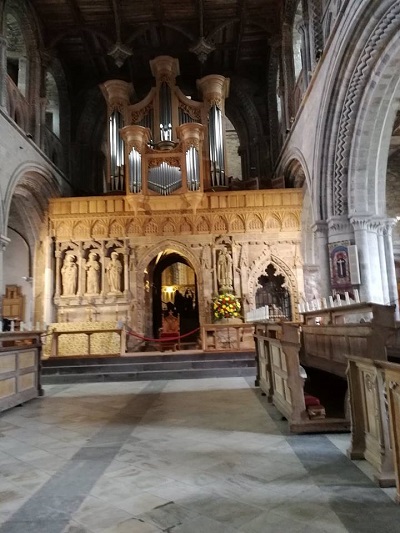
I arrived at the Cathedral and, though the keyboard of the organ is not visible, the great organ pipes are over the Chancel Arch and I stood there for some time to breathe in the atmosphere and imagine Ian playing the organ. Then I went to look at the impressive high interior of the Cathedral with fan vaulting Norman arches and a tremendous sense of grandeur which must have impressed the pilgrims; St David’s has been a place of pilgrimage for over 800 years. In 1124 the Pope declared that two pilgrimages to the Shrine of St David, the Patron Saint of Wales, were equal to one to Rome and the Shrine has been recently restored with five new icons depicting local saints, and a painted canopy has been installed above the Shrine.
After an excellent large plate of curry in a pub, the offerings in the cafes in the town had seemed unlikely to satisfy the hunger all the walking had brought on, I headed to the bus park to find the bus back and met my old friend again. He said that I had just missed the Whitesands Bay bus but that after another loop to a Bay he would be going there and that I could either meet him when he returned or go on the bus with him. I had a day ticket, my legs said that they had had enough and it was an extra last trip though the countryside so elected to go with him. Later I told him I was at the YHA so he said he would drop me as near it as he could. It had been an unforgettable day.
